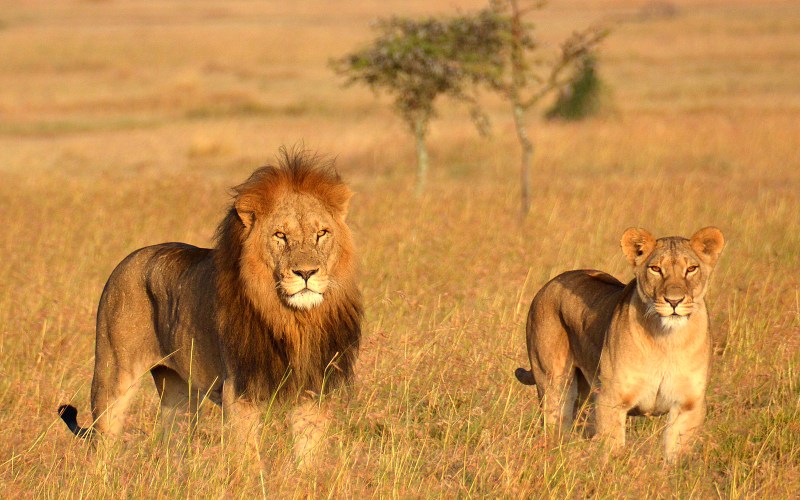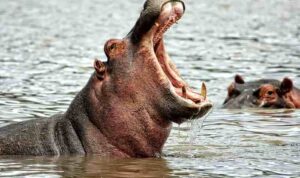Ngorongoro Crater, located in the Ngorongoro Conservation Area in northeastern Tanzania, is a globally recognized natural wonder. This volcanic caldera is not only a significant geological feature but also a hotspot for wildlife and a key area for understanding human evolution. Situated about 180 kilometers west of the city of Arusha, Ngorongoro is part of the Crater Highlands and has been a UNESCO World Heritage Site since 1979 due to its outstanding natural and cultural importance.
Table of Contents
ToggleGeological Significance

Ngorongoro Crater is the largest intact volcanic caldera in the world, formed about two to three million years ago when a massive volcano erupted and collapsed upon itself. The crater is 610 meters (2,000 feet) deep and spans an area of 260 square kilometers (100 square miles). It is thought that the original volcano may have reached heights of between 4,500 and 5,800 meters (14,800 to 19,000 feet) before it collapsed. The crater’s floor is a diverse ecosystem, containing grasslands, swamps, forests, and a shallow alkaline lake known as Lake Magadi, which attracts large flocks of flamingos.
The greater Ngorongoro volcanic group includes several other significant volcanic features, such as Olmoti and Empakaai craters. These calderas, although smaller, are geologically similar to Ngorongoro. The landscape is also shaped by the Gregory Rift, a part of the East African Rift System, which forms dramatic escarpments that border the conservation area.
Wildlife and Ecosystem
The Ngorongoro Crater hosts an astonishing variety of wildlife. It is often referred to as Africa’s “Garden of Eden” because of its dense concentration of animals. Large mammals dominate the scene, including the critically endangered black rhinoceros, which once numbered over 100 but declined to only 11-14 individuals by the mid-1990s. Other large animals include elephants, hippos, and African buffaloes. The crater is home to around 7,000 wildebeest, 4,000 zebras, and 3,000 gazelles, creating an unparalleled opportunity for visitors to observe the famous African fauna in a relatively small and confined area.
Predators such as lions and hyenas thrive in the crater, while cheetahs and leopards are more elusive but still part of the ecosystem. The crater floor’s grasslands and the Lerai Forest provide ample prey and hunting grounds for these carnivores. Interestingly, due to the crater’s geography, animals rarely migrate out of it, making wildlife viewing consistent throughout the year.
Cultural Importance and Human History

Ngorongoro’s significance extends beyond its wildlife. The area has been occupied by various human species for millions of years, evidenced by fossil remains found in the nearby Olduvai Gorge. This archaeological site is one of the most important paleoanthropological locations in the world, often referred to as the “Cradle of Humankind.” It contains fossils of early hominids, including Homo habilis and Paranthropus boisei, discovered by renowned archaeologists Louis and Mary Leakey in the 1950s. These findings have greatly advanced our understanding of human evolution.
The Maasai people, a semi-nomadic pastoralist community, have lived in the region for hundreds of years. However, their relationship with the conservation authorities has been fraught with tension. In 1959, the Ngorongoro Conservation Area was separated from Serengeti National Park to create a space where both wildlife and humans could coexist. The Maasai were relocated from the Serengeti to Ngorongoro, but as their population and livestock numbers grew, conflicts arose over land use. Restrictions placed on Maasai grazing in the crater culminated in the 2009 Wildlife Conservation Act, which further limited human activity within the conservation area, displacing many Maasai families and prohibiting subsistence farming in some areas.
Conservation Efforts
The Ngorongoro Conservation Area is unique in Tanzania, as it allows for human habitation alongside wildlife conservation. However, maintaining a balance between these two priorities has proven difficult. The International Union for Conservation of Nature (IUCN) and other organizations are working with local communities to promote sustainable land use practices that benefit both the people and the wildlife. Overgrazing by Maasai livestock and unregulated tourism are two of the primary threats to the delicate ecosystem of the crater.
Despite these challenges, Ngorongoro remains one of Tanzania’s most important conservation areas. The crater serves as a critical sanctuary for endangered species, particularly the black rhinoceros, and its high-density population of large mammals supports broader biodiversity.
The Role of Tourism

Tourism plays a significant role in the economy of Ngorongoro Conservation Area, and the crater is one of the most popular tourist destinations in Africa. Visitors flock to the area for game drives, which offer the chance to see the “Big Five”—lions, elephants, buffalo, leopards, and rhinoceros—alongside a host of other species in their natural habitat. The dramatic landscapes, from the steep crater walls to the shimmering Lake Magadi, offer breathtaking vistas for photographers and nature enthusiasts alike.
However, tourism must be carefully managed to prevent environmental degradation. Overcrowding in certain areas of the crater during peak tourist seasons has raised concerns about the impact on both the wildlife and the environment. To mitigate these effects, the Ngorongoro Conservation Area Authority has implemented measures to limit the number of vehicles allowed in the crater at any given time and is continually exploring ways to ensure that tourism remains sustainable.
Future Challenges
Looking ahead, the Ngorongoro Conservation Area faces several challenges. Climate change, increasing human populations, and land use conflicts will continue to test the resilience of this unique ecosystem. Efforts to expand community involvement in conservation and to find solutions to human-wildlife conflicts will be essential for the long-term sustainability of Ngorongoro.
The area’s inclusion as a UNESCO World Heritage Site highlights its global importance, but it also underscores the need for international cooperation in its preservation. Ongoing research in the Olduvai Gorge will likely continue to shed light on early human history, while conservation initiatives aim to protect the region’s rich biodiversity for future generations.
In conclusion, Ngorongoro Crater is a remarkable blend of geological, ecological, and cultural significance. Its vast caldera, teeming with wildlife, alongside its deep human history, makes it a destination like no other. Despite the challenges, the Ngorongoro Conservation Area remains a vital part of Tanzania’s natural heritage and a symbol of the need for harmonious coexistence between humans and nature.






